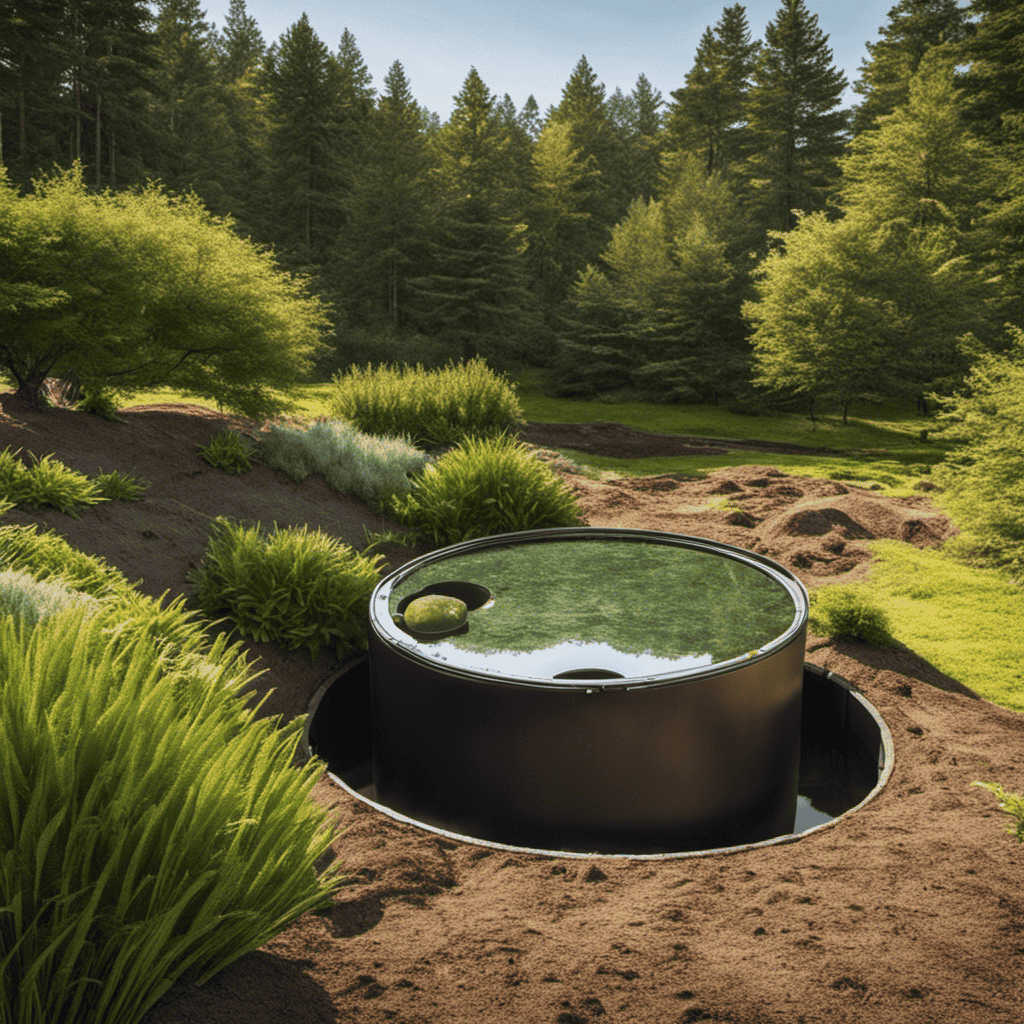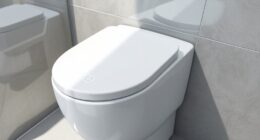Have you ever wondered where the water from your toilet goes after you flush?
Join us on a journey through the intricate network of pipes and treatment plants as we explore the fascinating world of wastewater management.
From the moment you press that flush button, the toilet water begins its symbolic descent into the drain pipe, making its way through the sewer system, until it finally reaches its ultimate destination: water recycling or disposal.
Get ready to uncover the secrets behind the disappearing act of toilet water.
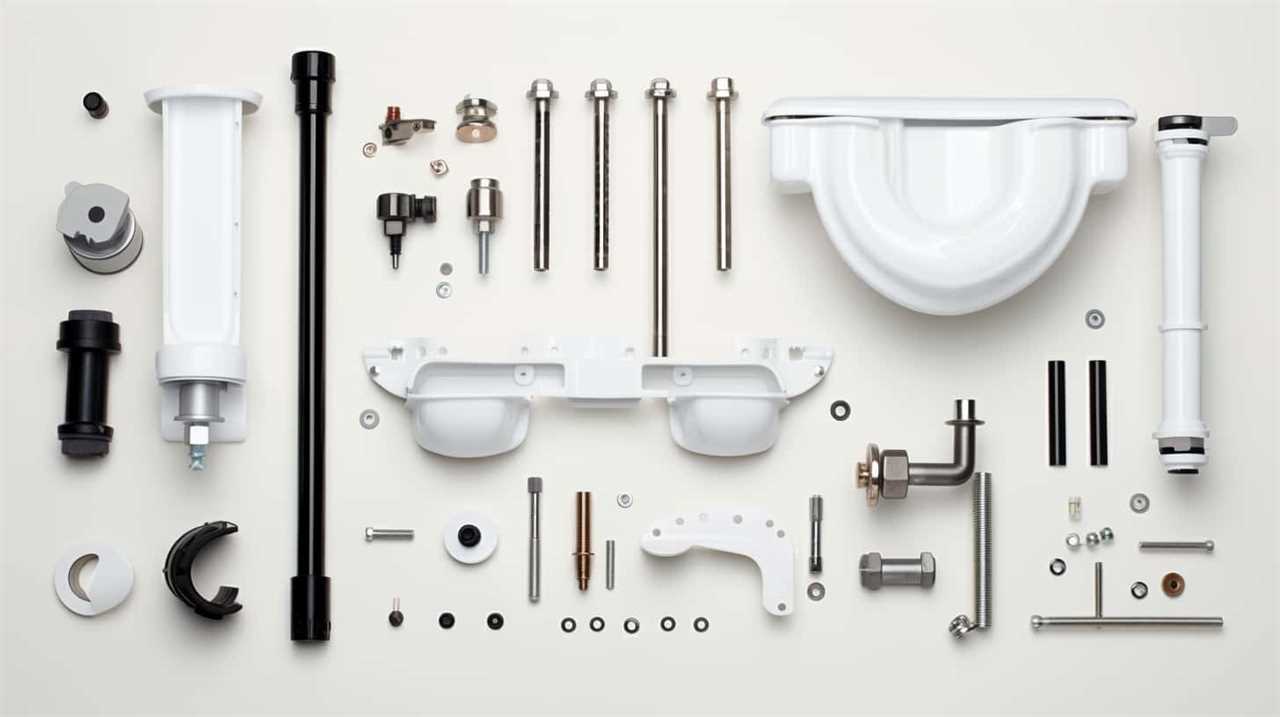
Key Takeaways
- Regular cleaning of the toilet bowl prevents clogs and unpleasant odors.
- Responsible flushing habits and regular maintenance ensure a functioning toilet system.
- Waste and water from the toilet enter the sewer lines of the city’s sewage system.
- Wastewater undergoes processes for purification and removal of contaminants before being recycled or safely returned to water bodies.
The Toilet Bowl to the Drain Pipe
After every flush, the toilet bowl empties its contents into the drain pipe, ensuring that waste and water are efficiently transported away from the bathroom.
Proper toilet bowl maintenance is essential for clog prevention and to maintain the overall functionality of the toilet system. Regular cleaning of the bowl helps prevent the buildup of mineral deposits, mold, and bacteria that can contribute to clogs and unpleasant odors.
Using a brush and a mild cleaner specifically designed for toilet bowls, scrub the interior surface, paying attention to the waterline and under the rim.
Additionally, be mindful of what’s flushed down the toilet, as certain items like wipes, sanitary products, and excessive amounts of toilet paper can lead to clogs.

Regular maintenance and responsible flushing habits will help ensure a smoothly functioning toilet system.
From the Drain Pipe to the Sewer System
Once the toilet bowl empties its contents into the drain pipe, we can trace the path of the waste and water as it continues its journey to the sewer system.
From the drain pipe, the waste and water enter the sewer lines of the city’s sewage system.
Along this path, the water undergoes a process called water filtration to remove impurities and contaminants. This filtration process ensures that the water released back into the environment is relatively clean and safe.
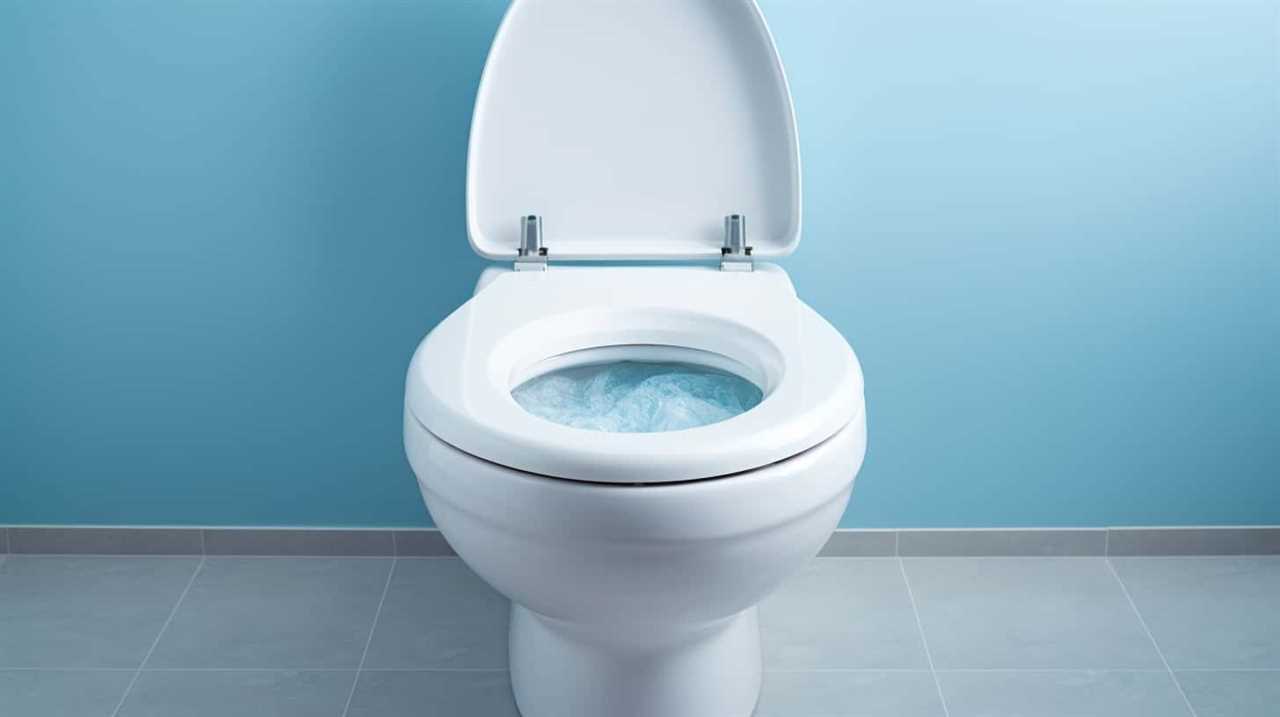
However, it’s important to note that the environmental impact of this process can vary depending on the efficiency of the sewage treatment plants and the quality of the water bodies where the treated water is discharged.
Proper maintenance and regulation of the sewer system are crucial to minimize any adverse effects on the environment.
The Journey Through the Sewer Pipes
As we trace the path of waste and water from the drain pipe, it enters the sewer pipes of the city’s sewage system. The journey through these pipes is vital for the proper disposal of wastewater and the maintenance of a clean and healthy environment.
Here is a breakdown of what happens as the waste and water travel through the sewer pipes:
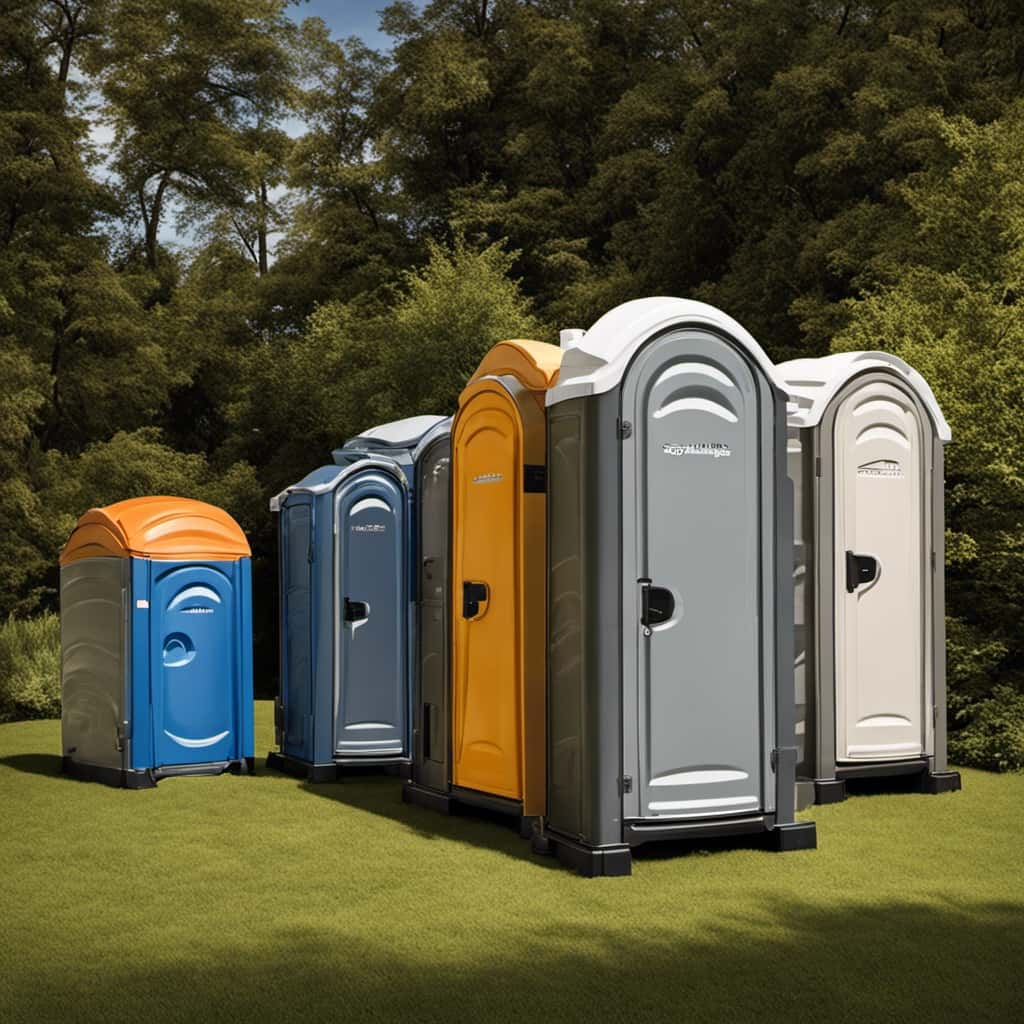
- Gravity takes over: The force of gravity helps move the wastewater through the pipes, ensuring a steady flow towards the treatment plant.
- Sewer maintenance and repair: Regular maintenance and repair of the sewer pipes are crucial to prevent blockages and leaks that can lead to environmental contamination and health hazards.
- Treatment facility connection: The sewer pipes eventually connect to the city’s wastewater treatment facility, where the water undergoes a series of processes to remove contaminants and pollutants.
- Environmental impact of wastewater disposal: Proper disposal of wastewater is essential to safeguard the environment. Treatment processes help remove harmful substances before the water is released back into natural water bodies.
Understanding the journey through the sewer pipes highlights the importance of sewer maintenance and repair and the environmental impact of wastewater disposal.
Arrival at the Wastewater Treatment Plant
Upon reaching the wastewater treatment plant, we continue the journey of waste and water as it undergoes a series of essential processes for purification and removal of contaminants. The arrival of wastewater at the treatment plant marks a critical step in minimizing the environmental impact of human waste.
Treatment processes at the plant are designed to remove harmful substances and ensure the safe disposal of treated water back into the environment. These processes typically include physical, chemical, and biological methods.
Physical processes involve the removal of large debris and solids through screening and sedimentation. Chemical processes utilize coagulants and disinfectants to further remove impurities. Biological processes employ microorganisms to break down organic matter and remove pathogens.

Through these treatment processes, wastewater is transformed into clean, safe water that can be returned to rivers, lakes, or oceans without harming the environment.
The Final Destination: Water Recycling or Disposal
After arriving at the wastewater treatment plant, we continue the journey of waste and water to explore the final destination: water recycling or disposal. Here, we examine the two options and their environmental impact.
- Water recycling techniques:
- Advanced filtration systems remove impurities, making the water safe for reuse.
- Disinfected water is used for irrigation, industrial processes, or even replenishing aquifers.
- This approach reduces the strain on freshwater sources and promotes sustainability.
- Recycled water can also be used for non-potable purposes, such as toilet flushing.
- Disposal methods:
- If water recycling isn’t feasible, treated wastewater is safely discharged into rivers or oceans.
- Extensive treatment ensures compliance with strict environmental regulations.
- Dilution in large bodies of water minimizes potential harm to ecosystems.
- Monitoring programs ensure ongoing assessment of the impact on marine life.
Understanding water conservation techniques and their environmental impact helps us make informed decisions about the management of our precious water resources.
Frequently Asked Questions
How Does the Flushing Mechanism in a Toilet Work?
When we flush a toilet, the toilet flushing mechanism activates, causing the toilet water flow to push waste through a trap and into the sewage system. From there, it goes to a wastewater treatment plant for processing.

What Happens if the Drain Pipe Gets Clogged?
If the drain pipe gets clogged, potential hazards can arise. For instance, wastewater may back up and overflow, causing damage and unsanitary conditions. It is crucial to address a clogged drain pipe promptly to avoid these issues.
Are There Any Risks or Dangers Associated With the Journey Through the Sewer Pipes?
There are potential risks and dangers associated with the journey through the sewer pipes. These include the possibility of blockages, leaks, and exposure to harmful bacteria. Proper maintenance and regular inspections can help mitigate these risks.
How Long Does It Take for the Wastewater to Reach the Wastewater Treatment Plant?
It takes varying amounts of time for wastewater to reach the treatment plant due to factors like distance and sewer system efficiency. However, the overall goal is to transport it as quickly and efficiently as possible.
What Are the Specific Processes Involved in Wastewater Treatment at the Plant?
Wastewater treatment processes involve several steps to remove contaminants. Technologies such as sedimentation, filtration, and disinfection are used. These processes ensure that the water is purified and safe before it is discharged back into the environment.
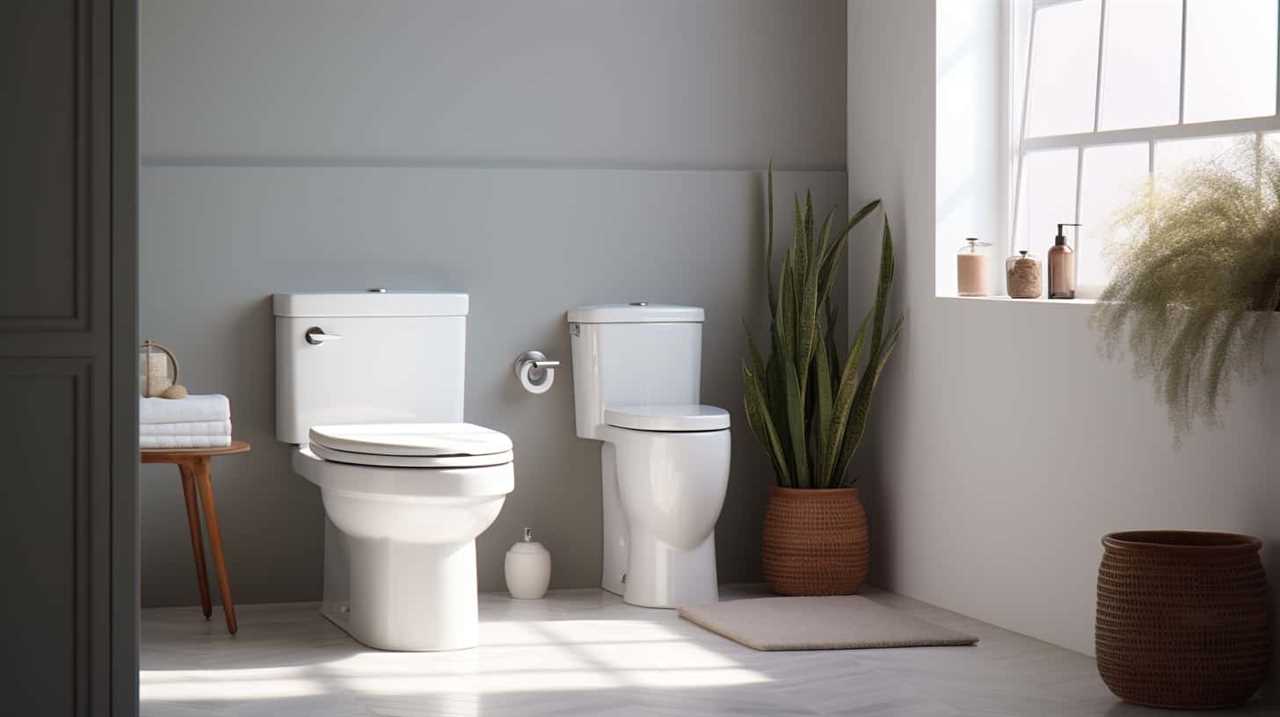
Conclusion
In conclusion, once we flush the toilet, the water travels through the drain pipe and enters the sewer system.
It then embarks on a journey through the sewer pipes until it reaches the wastewater treatment plant.
Here, it undergoes a thorough process of filtration and treatment before being either recycled for future use or safely disposed of.
So, the next time you flush, remember that your toilet water is on a fascinating and important adventure to its final destination.





